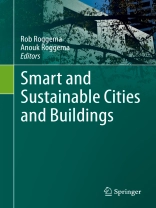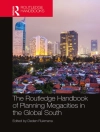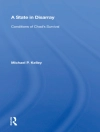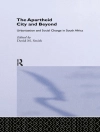This book brings together the papers presented at the Smart and Sustainable Built Environments Conference, 2018 (SASBE).This latest research falls into two tracks: smart and sustainable design and planning cities; and the technicalities of smart and sustainable buildings. The growth of smart cities is evident, but not always linked to sustainability. This book gives an overview of the latest academic developments in increasing the smartness and sustainability of our cities and buildings. Aspects such as inclusivity, smart cities, place and space, the resilient city, urbanity and urban ecology are prominently featured in the design and planning part of the book; while energy, educational buildings, comfort, building design, construction and performance form the sub-themes of the technical part of the book.
This book will appeal to urban designers, architects, urban planners, smart city designers and sustainable building experts.
Зміст
Part I: Design and Plan for Smart and Sustainable Cities.- Chapter 1 Introduction.- Chapter 2 Towards integration of smart and sustainable cities.- Part II: The Resilient City.- Chapter 3 Resilient spatial planning for drought-flood coexistence (dfc): outlook towards smart cities.- Chapter 4 Globalization and transformations of the city of Sydney.- Chapter 5 Post-earthquake recovery in Nepal.- Chapter 6 Analyzing the potential of land use transformation in the urban structuring and transformation axes in São Paulo: a case study in the Belenzinho neighbourhood.- Part III: Urbanity.- Chapter 7 Implementing a new human settlement theory: strategic planning for a network of circular economy innovation hubs.- Chapter 8 Density and quality of life in Mashhad, Iran.- Chapter 9 Deep renovation in sustainable cities: zero energy, zero urban sprawl at zero costs in the abracadabra strategy.- Part IV: Smart Cities.- Chapter 10 Application of fuzzy AHP for ranking and selection of innovation in infrastructure project management.- Chapter 11 The role of smart city initiatives in driving partnerships: a case study of the Smart Social Spaces Project, Sydney Australia.- Chapter 12 Enabling smart participatory local government.- Chapter 13 Data management using computational building information modeling for building envelope retrofitting.- Part V: Urban Ecology.- Chapter 14 Australia’s urban biodiversity: how is adaptive governance influencing land-use policy?.- Chapter 15 Mapping the permeability of urban landscapes as stepping stones for forest migration.- Chapter 16 Contemporary urban biotopes: lessons learned from four recent European urban design plans.- Chapter 17 The influence of landscape architecture on landscape construction health and safety.- Part VI: Space and Place.- Chapter 18 A multi-criteria decision analysis based framework to evaluate public space quality.- Chapter 19 Factors influencing urban open space encroachment: the case of Bloemfontein, South Africa.- Chapter 20 Urban agricultural practices in the megacities of Dhaka and Mumbai.- Chapter 21 Re-imagining Urban Leftover Spaces.- Chapter 22 A new model for place development – bringing together regenerative and placemaking processes.- Part VII: Inclusivity.- Chapter 23 Public participation: A sustainable legacy for Olympic Parks.- Chapter 24 Adaptation of “participatory method” in design “for/with/ by” the poor community in Tam Thanh, Quang Nam, Vietnam.- Chapter 25 Fifty years of inclusive transport building design.- Part VIII: Energy.- Chapter 26 The total cost of living in relation to energy efficiency upgrades in the Dutch, multi-residential building stock.- Chapter 27 Analysis of the energy-saving in the conference center atrium.- Chapter 28 Sharing urban renewable energy generation systems as private energy commons.- Chapter 29 Identifying bottlenecks in the photovoltaic systems innovation ecosystem – an initial study.- Chapter 30 A user-led approach to smart campus design at a university of technology.- Part XI: Comfort.- Chapter 31 Outdoor comfort in metro Manila: mitigating thermal stress in typical urban blocks by design.- Chapter 32 Markov logic network-based group activity recognition in smart buildings.- Chapter 33 Impacts of highly reflective building façade on the thermal and visual environment of an office building in Singapore.- Chapter 34 A field survey on thermal comfort of occupants and cold stress in CLT school buildings.- Part X: Green Building.- Chapter 35 Towards self-reliant development: capacity gap within the built environment of Mt. Elgon rural inhabitants.- Chapter 36 Mainstreaming real sustainability in architecture.- Chapter 37 Green buildings in Australia: explaining the difference of drivers in commercial and residential sector.- Part XI: Construction.- Chapter 38 Sustainable waste management practices during construction projects.- Chapter 39 Towards a circular economy in the built environment: an integraldesign framework for circular building components.- Chapter 40 Cradle to cradle building components via the cloud: a case study.- Chapter 41 Producing work-ready graduate for the construction industry.- Part XII: Performance.- Chapter 42 Tower blocks in different configurations – aspects of daylight and view.- Chapter 43 Assessing the lighting performance of an innovative core sunlighting system.- Chapter 44 Vertical light pipe potentiality for buildings in Surabaya, Indonesia.- Chapter 45 Energy efficiency of a high-rise office building in the Mediterranean climate with the use of different envelope scenarios.
Про автора
Prof. dr. ir. Rob Roggema is currently Professor of Sustainable Urban Environments. He is a Landscape Architect and an internationally renowned design-expert on sustainable urbanism, climate adaptation, energy landscapes and urban agriculture. He has previously held positions at universities in the Netherlands and Australia, State and Municipal governments and design consultancies. Rob developed the Swarm Planning concept, a dynamic way of planning the city for future adaptation to climate change impacts.Rob is the leader of the Urban Research Network and focuses in his research on resilient and smart urbanism. He is also leading the Sydney Urban_Institute in Sydney, which will research and implement intelligent solutions for current and future urban problems.Rob has designed and led over 30 design charrettes around the world, involving communities, academics, governments and industries in design processes for more resilient communities. He has written three books on climate adaptation and design, four on Urban Agriculture, and one each about design charrettes, Rio’s Food Roofs and Design for Recovery in Japan.
Anouk Roggema is a Linguistics student at the University of Amsterdam and owner of AF-Wordsmith. AF Word-Smith AF is an accurate and quick service for all your translation and editing work. My name is Anouk Roggema and I grew up in both the Netherlands and Australia. Because of this I write fluently in both languages. I am a linguistics student at the University of Amsterdam and love to work on language and texts. There is nothing better than transforming and translating an existing text into a catchy and comprehensible text. This brings language alive. Anouk has edited the volume of Smart and Sustainable Built Environments for Springer and translated the inaugural Lecture ‘Recipro City-Giving more than taking’.












